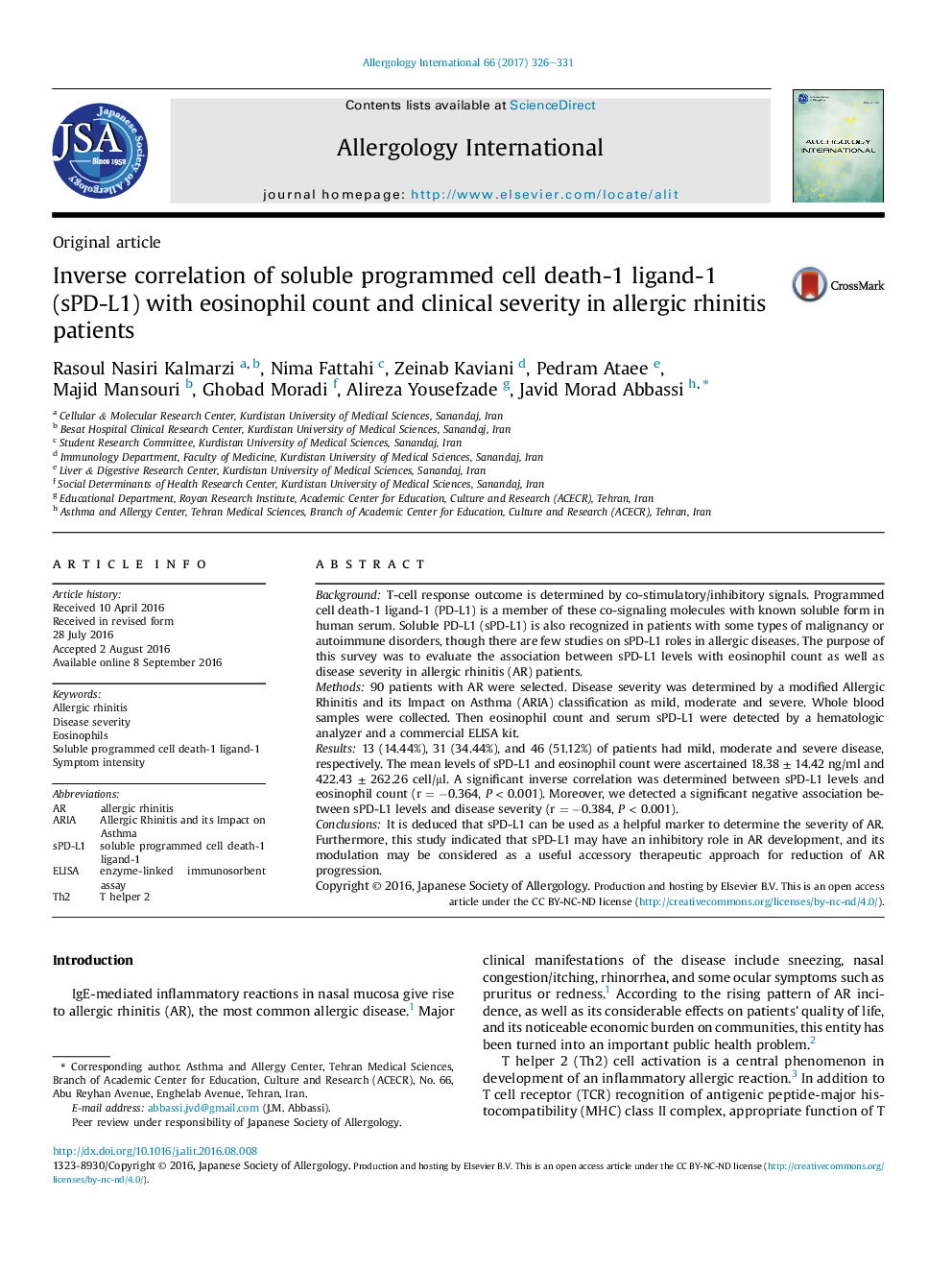| کد مقاله | کد نشریه | سال انتشار | مقاله انگلیسی | نسخه تمام متن |
|---|---|---|---|---|
| 5665208 | 1407737 | 2017 | 6 صفحه PDF | دانلود رایگان |

BackgroundT-cell response outcome is determined by co-stimulatory/inhibitory signals. Programmed cell death-1 ligand-1 (PD-L1) is a member of these co-signaling molecules with known soluble form in human serum. Soluble PD-L1 (sPD-L1) is also recognized in patients with some types of malignancy or autoimmune disorders, though there are few studies on sPD-L1 roles in allergic diseases. The purpose of this survey was to evaluate the association between sPD-L1 levels with eosinophil count as well as disease severity in allergic rhinitis (AR) patients.Methods90 patients with AR were selected. Disease severity was determined by a modified Allergic Rhinitis and its Impact on Asthma (ARIA) classification as mild, moderate and severe. Whole blood samples were collected. Then eosinophil count and serum sPD-L1 were detected by a hematologic analyzer and a commercial ELISA kit.Results13 (14.44%), 31 (34.44%), and 46 (51.12%) of patients had mild, moderate and severe disease, respectively. The mean levels of sPD-L1 and eosinophil count were ascertained 18.38 ± 14.42 ng/ml and 422.43 ± 262.26 cell/μl. A significant inverse correlation was determined between sPD-L1 levels and eosinophil count (r = â0.364, P < 0.001). Moreover, we detected a significant negative association between sPD-L1 levels and disease severity (r = â0.384, P < 0.001).ConclusionsIt is deduced that sPD-L1 can be used as a helpful marker to determine the severity of AR. Furthermore, this study indicated that sPD-L1 may have an inhibitory role in AR development, and its modulation may be considered as a useful accessory therapeutic approach for reduction of AR progression.
Journal: Allergology International - Volume 66, Issue 2, April 2017, Pages 326-331